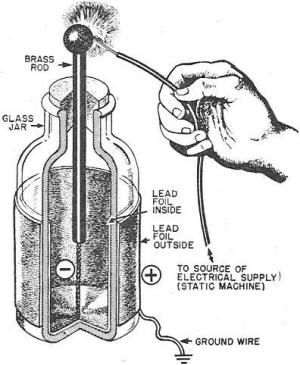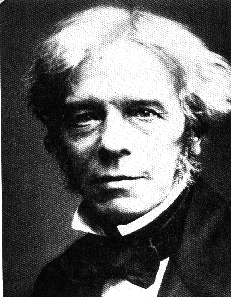Capacitors are a great example to prove the fact that even the simplest of devices can become complex over the years; in case of capacitors, it is nothing more than an insulator between two conductors and it has become pretty complex in this 250 years of technical evolution!!
Almost all of us are familiar with the static charge that is generated by friction – a phenomenon known as triboelectricity. When you walk on a carpeted floor, pull a transparent tape off a role, or comb your hair on a dry day, have you noticed that it all results in the separation of a little amount of positive and negative charge?
This static electricity was discovered about more than two millenniums earlier; however, it was not until the mid 1700s that energy storage properties were discovered.
We have written an interesting article which explains the working of capacitors. You can skim through it, if you wish to learn more.
The Earliest Intervention
It is hard to believe the fact that the concept of capacitors dates back to the sixth century BC. The ancient Greeks had already known that pieces of amber were capable of attracting light weight particles after being rubbed.
The earliest known written record of charging by friction dates back to the sixth century BC; it was when the Greek scientist Thales of Mileus noticed this friction. When he rubbed amber with animal fur, it acquired the ability to pick up small bits of material. Amber becomes electrified by triboelectric effect, that is, mechanical separation of charge in a dielectric. In fact, the Greek word for amber is “Elektron” and thus the word “electricity” was born.
For approximately next 2300 years, wherever a study about electricity occurred, somebody took two different materials and rubbed them together to create separate fields of positive and negative charges.
Around the year 1650 AD, Otto von Guericke constructed a crude electrostatic generator; it was a sulfur ball that was allowed to rotate on a shaft. When Guericke held his hand against this sulfur ball and turned the shaft quickly, he noticed a static electric charge building up. This experiment did not fail to inspire the development of several forms of friction devices that enormously helps in the study of electricity.
Exploration in the Eighteenth Century AD
The 18th century AD was considered as an Enlightenment era in Europe, a time characterized by acquisition of tremendous knowledge and expansion of culture. Science was a fashionable quest and public talks on scientific subjects were well attended by the educated and empowered classes of Europe. The most popular were the lectures given by professionals related to the ‘electricity’ category. In fact, the word ‘electrician’ originally referred to an individual who is knowledgeable in the nature and concept of static electricity. On the whole, electricity was easily one of the hottest topics in the 18th century and a lot of exploration was done with electrostatic machines that used friction to generate charge.
Though friction is quite an easy and inexpensive way to separate charge that could be used in electric experiments, the quantity of charge generated was too less. So, professionals were badly in need of some way of increasing the amount of charge available for experiments.
The First Remarkable Breakthrough
The first device for storing charge was discovered in the winter months of 1745-46 by two electricians who worked independently. One was Ewald Georg Von Kleist, also known as Jurgen das Opfa, a German scientist (there are a few claims that he is from Poland) and the other was Pieter Van Musschenbroek, a professor of math and physics at the University of Leyden in Holland.
Von Kleist and His Device
The device that was built by Von Kleist had a medicine bottle that was filled partly with water and well sealed with a cork. A nail was pushed through the cork into the water. By holding the bottle in one hand, the nail was made to contact the terminal of an electrostatic machine; this helped acquire some charge. When Von Kleist reached for the nail in order to remove it from the stopper while still holding the bottle, he noticed that the separated charges were able to reunite by flowing through his own body.
Van Musschenbroek and His Experiments
Van Musschenbroek came up with almost a similar device in the form of Leyden jar (named after the city) which is typically known as the first capacitor. The device and experiences of Van Musschenbroek was very similar to that of von Kleist; however, with three exceptions. One, it was a visiting student named Andreas Cunaeus who made the shocking discovery and not van Musschenbroek himself. Two, he did make a lot of improvements to the device the most important of which is removing the water and using a metallic foil to wrap both the inside and outside of the jar. Three, he wrote to his colleagues to explain them all about the device and the experience.

- Leyden Jar Experiment by Van Musschenbroek
In his letters to his colleagues, he had mentioned not to try this because it was a terrible experience. This statement made everyone try this because of the simple rule: never say “never try” something, especially, something “terrible” because only then everyone may want to try it badly. Proving that the above mentioned statement is 100% percent true, soon scientists all over Europe and one Benjamin Franklin in America started constructing their own version of improved electric charge storage devices.
On the other hand, Kleist, however, did not have detailed records and in depth notes and so he was often overlooked as a contributor to the evolution of the capacitor. Nevertheless, as years passed, both were given equal credit as it was well established that their research was completely independent of each other and simply a scientific coincidence.
The Leyden Jar and Its Significance
The Leyden jar was employed comprehensively to conduct many early experiments in electricity; besides, its discovery carried great significance in the study of electricity. Early on, researchers had used insulated conductors of large dimensions if they wanted to store a charge. The Leyden jar offered a much more compact alternative. The unit of capacitance in those days was the ‘jar’ which is equivalent to about 1 nF.
The Leyden jar was quite a simple device. It had a glass jar, half filled with water and lined with metal foil inside and out. The glass served as the dielectric (for quite some time, it was thought that water was the major ingredient). There was a metal chain or wire that was driven through a cork in the top part of the jar. The chain or wire was then hooked to something that would produce a charge, most probably a hand-cranked static generator. Once the charge is delivered, the jar would hold two equal but opposite charges in equilibrium until they were connected with a wire, producing a slight spark or shock.
Although the Leyden jar has been around for almost 250 years, it carries all the elements of a modern capacitor including two conducting plates (the metallic foil in the Leyden jar) and an insulator that separates the plates so that they make no electrical contact (the glass jar – the Leyden jar).
Later, it was Daniel Gralath who first combined several jars in parallel into a capacitor “battery” to possibly increase the charge storage capacity.
Benjamin Franklin and Capacitors
Franklin worked with the same Leyden jar in his electricity-related experiments and soon identified that a flat piece of glass was equally good as the jar model; this prompted him to develop the flat capacitor or the Franklin Square.
Consistent use of the Leyden Jar
Leyden jar or the flat capacitor was used widely until about 1900 when the invention of the radio created a demand for standard capacitors and the steady move to higher frequencies were in need of capacitors with lower inductance. A more compact construction was used which was a flexible dielectric sheet like an oiled paper sandwiched between sheets of metal foil that were rolled or folded into a small package.
These early capacitors were also called condensers (derived from Italian condensatore), a term that is still in use. The term was coined by Alessandro Volta in 1782 with reference to the ability of the device to store a higher density of electric charge than a normal isolated conductor. Most non-English European languages use the term condenser even today.
Michael Faraday Initiating the Practical Application of Capacitors
After a few years, the renowned English chemist Faraday made some of the major contributions to the capacitor technology which includes the concept of dielectric constant and the invention of the first practical fixed and variable capacitors. He became the pioneer in finding the first ever practical applications for the capacitor when he tried to store some unused electrons from his experiments. His efforts resulted in the invention of the first usable capacitor that was made from large oil barrels. It was Faraday’s progress with capacitors that eventually enabled us to deliver electric power over great distances. His significant contributions to capacitor technology are recognized in the unit of capacitance, Farad.
Early Sources That Created Commercial Demand of Capacitors
Capacitor technology did not evolve at a rapid pace until the invention of the vacuum tube that facilitated electronic amplifiers required for long distance telephone technology and practical radio technology that was first licensed commercially in 1920. However, the first AC line powered radio was not introduced until the year 1927. It was the rapid evolution of the line-operated radio receivers that created a large consumer market for capacitors.
Today capacitors are extensively used in almost all the electrical devices on earth.


Comments are closed.